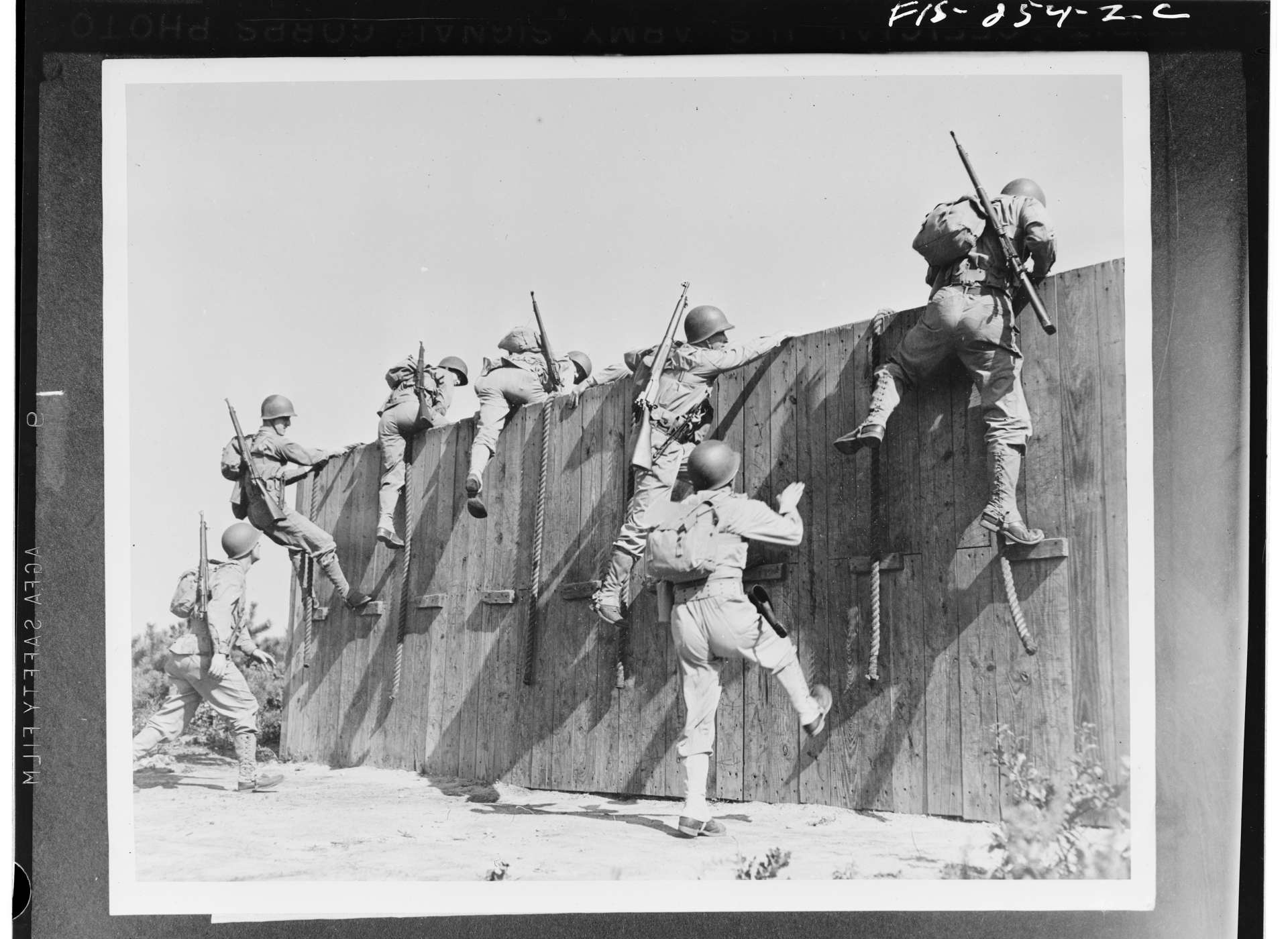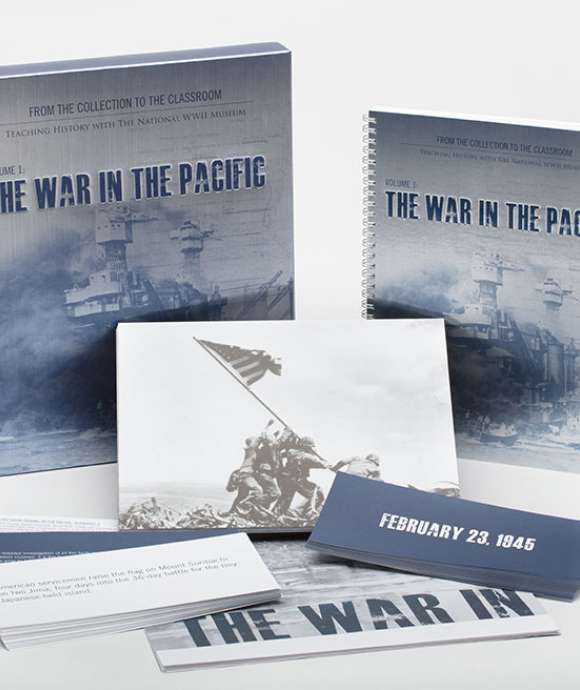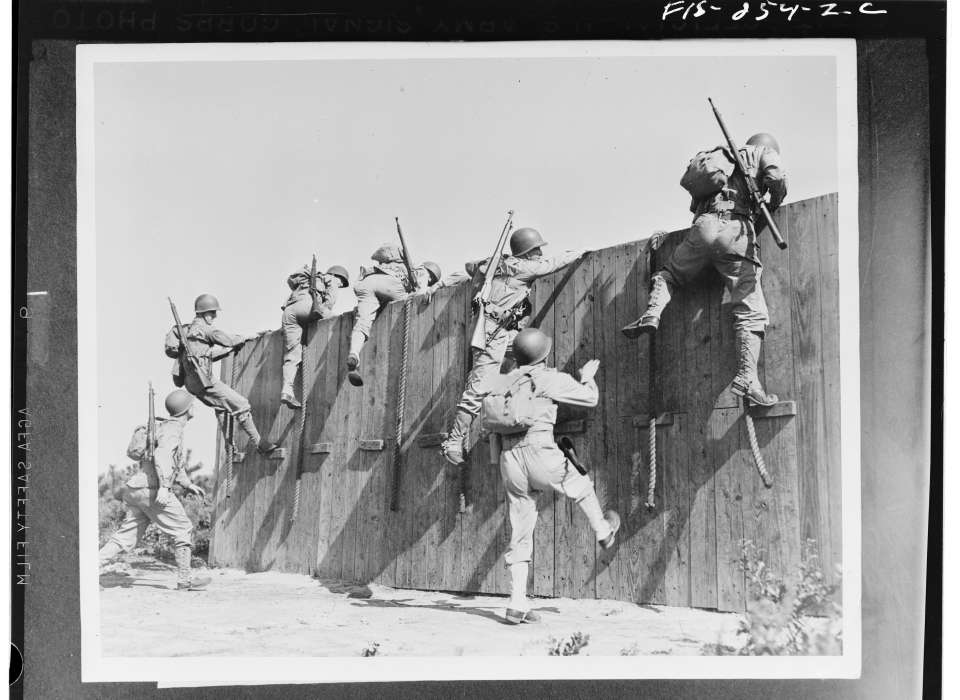Primary Image: (Image: Library of Congress, LC-USW33-000254-ZC.)
As the United States prepared for war, military leaders had a long list of needs—guns, tanks, ships, and equipment of every kind. One of the things they needed most of all, however, was people. In 1939, the US Army only had 174,000 soldiers, including the Army Air Forces. At its peak during the war, the Army grew to over 8 million men and women in uniform, joined by an additional 3.4 million in the Navy. The new additions were mostly young Americans who would normally have been pursuing jobs, schooling, and family life, but instead were answering the nation’s call to arms. Many of them had never even traveled outside their home state, let alone Europe, Asia, or the Pacific Islands. Preparing these millions of civilians for war would be one of the military’s most daunting challenges.
About 39% of the new recruits volunteered to serve; the remainder were called up through conscription, also known as the draft. Congress established the nation’s first peacetime draft in 1940 by passing the Selective Training and Service Act, which required all men between the ages of 21 and 35 to register for potential military service. Once the United States entered the war, the requirement expanded to include all men 18 to 65 years of age. Over 10 million men were inducted into the military while the Selective Training and Service Act was in effect from September 16, 1940, to March 1947. Volunteers came from a variety of sources. Some belonged to training programs at their high schools or colleges, like the Army’s Reserve Officer Training Corps (ROTC), and entered the military directly from school. Others signed up for duty at one of the many recruiting centers that popped up all over the United States, especially right after the attack on Pearl Harbor in 1941. Sidney Phillips of Mobile, Alabama, remembered deciding to join the Navy along with a friend after hearing about the attack. When they met the next morning to go to the recruiter, however, the lines of young men waiting to enlist were already longer than a football field! “We thought we were going to be the early birds,” Phillips recalled. He and his friend ended up joining the Marines, thanks to a shorter line and a persuasive recruiter.
Each branch of military service required different skills, but all new recruits went through a few weeks of basic training, often called “boot camp.” The goal was to turn the wide variety of individuals who entered the service into teams of fighters who could work seamlessly with one another to achieve their objectives. To do this, basic training taught a new recruit to think of himself less as an individual and more as an integral part of his unit. As soon as they arrived, new recruits turned in their civilian clothes and belongings and received standard issue uniforms and equipment. Camp personnel shaved the heads of the recruits and assigned them serial numbers. Platoons of recruits slept, ate, and learned together, and even did hours upon hours of physical fitness training as a unit. Following commands, they practiced the same basic skills over and over— marching, loading, unloading, and cleaning their weapons. Drill instructors used tough methods to force the newcomers to become attentive to detail and protocol. Even the smallest mistakes could result in extra kitchen duty or a challenging physical punishment—sometimes for the entire group. “It was a little scary at first,” remembered William G. Dabney, an African American soldier from Virginia. “The main thing was to obey orders … as long as you did that you’d get along.”

Soldiers tackle part of an obstacle course at Camp Edwards, Massachusetts, 1942.
(Image: Library Of Congress, LC-USW33-000257-ZC.)
"It was true we were all volunteers and all of them were young men—18, 19 years old—and all of them wanted to prove that they were men and that they were part of the best and that they were the best. That was true. We were."
T. Moffatt Burris, 504th Infantry Regiment, 82nd Airborne Division
Many veterans remember those first few weeks of basic training as a transformative experience. “When you go through boot camp and they pass you,” recalled Ben Quintana of Mississippi, “you’re ready to fight anything.” Before reporting to a ship or heading overseas, however, most recruits went through more specialized training for their specific duties within their branch of the military. Some learned how to operate radios or other communications equipment. Others trained to use special weapons or invasion techniques. Depending on the assignment, servicemembers sometimes trained at six or more different locations before finally deploying overseas, and even then they might have received further training before seeing action.

Like this article? Read more in our online classroom.
From the Collection to the Classroom: Teaching History with The National WWII Museum
As each new group of servicemembers deployed, many were understandably anxious about what lay ahead. Their training, however, had taught them how to stick together and make the most of whatever situation might arise. “You learn to depend on each other,” said Frank Buschmeier, a gunner from Ohio. “You can’t survive by yourself.”
Cite this article:
MLA Citation:
APA Citation:
Chicago Style Citation:








